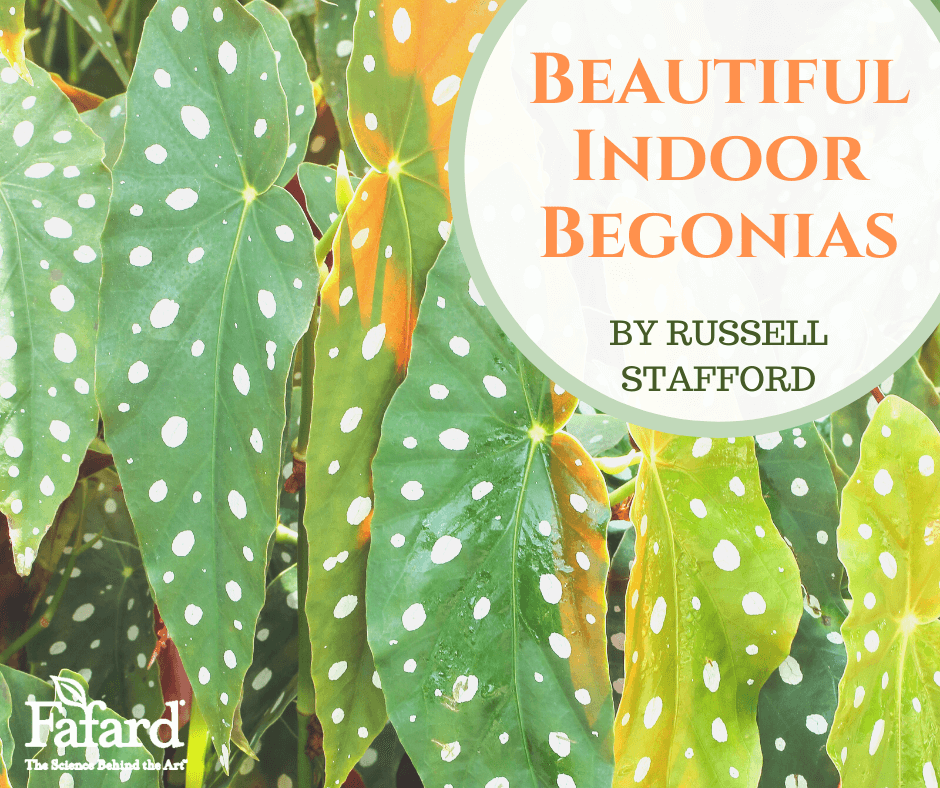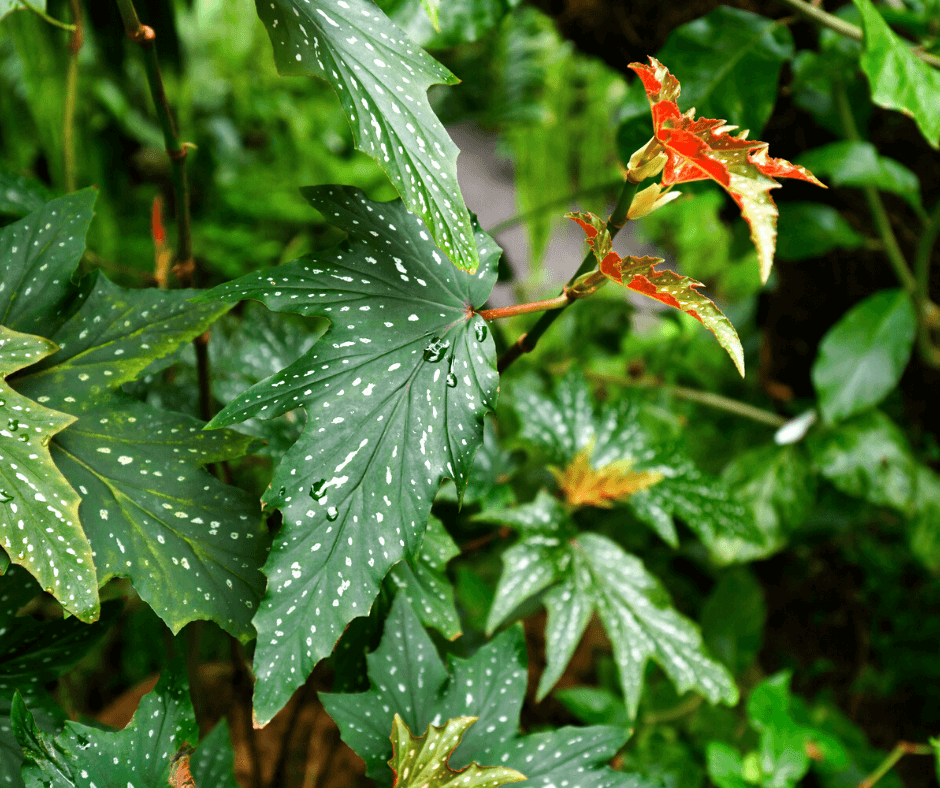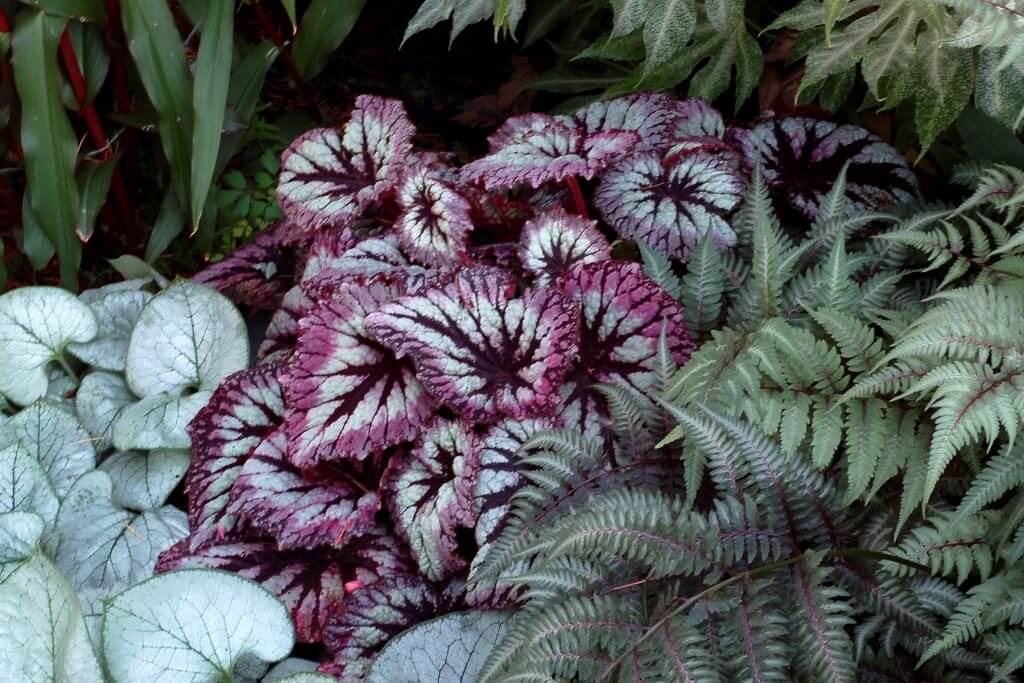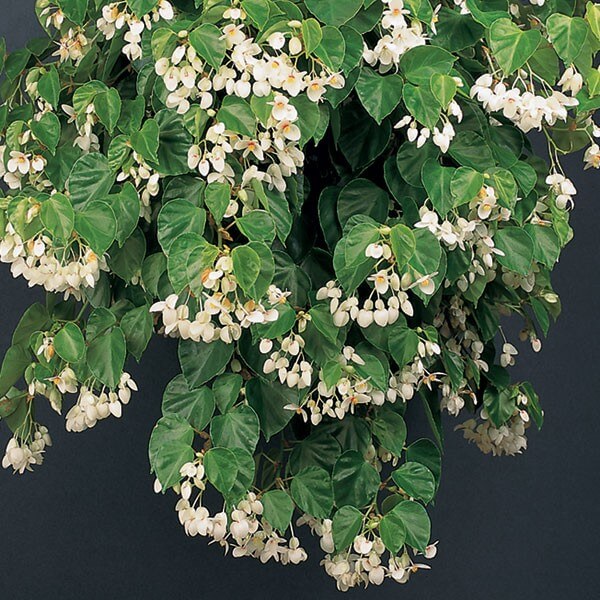
Begonias are so much more than summer bedding plants. This dizzyingly diverse genus encompasses more than 900 tropical and temperate species and 10,000 cultivars – most of which are not Semperflorens hybrids (the botanical name for the ubiquitous wax begonia). Growing in a wide range of forms and habits – from elfin perennials to cascading vines to large shrubs – they offer a myriad of possibilities for garden and greenhouse.
They also offer something for every season. Winter, especially, is a great time to have some begonias around the house – including those types that bear splashy evergreen leaves in a range of fanciful shapes and colors.
Cane Begonias

Cane begonias, for example, are a group of shrubby species and cultivars distinguished by their thick, fleshy, bamboo-like stems and typically large, flamboyantly marked leaves, often of “angel-wing” shape.
Numerous cane varieties are available, including Begonia maculata ‘Wightii’, whose elongated, olive-green “angel wings” are decorated with silvery-white dots and maroon undersides and clusters of white flowers hover over the foliage in summer; Begonia aconitifolia ‘Metallica’, named for its shimmering deep green, purple-veined, hand-shaped leaves with red-purple reverses. Pink-flushed white flowers appear in fall; and Begonia ‘Cracklin’ Rosie’, with pleated, shiny, dark olive-green, pink-dotted leaves with maroon undersides. New leaves are suffused with copper.
Rex Begonias

Also noted for their flashy leaves are the prima donnas of the tribe, the Rex hybrids, which trace their lineage to the begonia species of that name (it arrived in Europe from Northeast India in the mid-nineteenth century). Most Rex begonias have heart-shaped leaves with brash silver splashings and unequal lobes that sometimes spiral at the base. Rather fussy in cultivation, they require high humidity and porous soil kept neither too wet nor too dry. Cultivars include ‘Raspberry Swirl’, with relatively jagged, red-purple, silver-edged leaves; and the award-winning, Rex-like Begonia ‘Fireworks’, which is distinguished by its crisp, silver-washed leaves with black-purple veins and purple margins.
Numerous other begonias make great winter foliage plants. Among the many possibilities are ‘Caravan’, an easy-care, shrubby cultivar thickly clad with lime-green-veined, chocolate-suffused leaves that bring elephant ear (Colocasia) to mind; ‘Connee Boswell’, whose deeply lobed, maple-shaped, heavily silvered leaves have dark green, purple-flushed veins and rims; and ‘Madame Queen’, unique for its heavily ruffled, olive-green, red-backed leaves that have the look of an ornamental kale.
Brazilian Heart Begonia

Perhaps most desirable for winter display are the begonias that go one better by flowering during this season. The cascading stems of the easy-to-grow Begonia solananthera are frothed with fragrant, white, sometimes pink-tinged flowers from early winter into spring. Fleshy, lettuce-green, heart-shaped leaves provide a year-round display. The B. solananthera hybrid ‘Potpourri’ one-ups its parent by producing rosy-pink blooms over an even longer season, sometimes flowering into early summer. A few cane begonias add to their value by blooming on and off throughout the year (‘Paper Snowflake’ is among the best, with silver-flecked angel-wing leaves and heads of deep pink blooms). And some wax begonias excel not only for summer bedding but also as year-round, ever-blooming pot plants. For bright, easy, four-season color, few house plants can match the endless succession of salmon-red blooms brought forth by the Semperflorens hybrid ‘Cotton Candy’.
Most indoor begonias thrive in a warm eastern exposure or other brightly lit but not overly sunny location. They also often benefit from relatively high humidity (which can sometimes be provided by placing the pot on gravel in a saucer half-filled with water). An airy, humus-rich, soil-free potting mix high in peat (such as Fafard Professional Potting Mix with RESiLIENCE) works best. Water when the soil surface is dry, either from the top or by immersing the base of the pot in water. Then stop by the windowsill now and then to enjoy the winter show!



